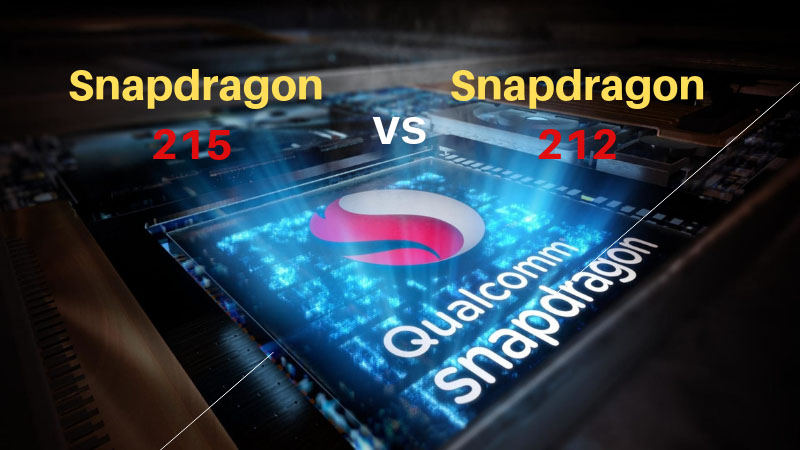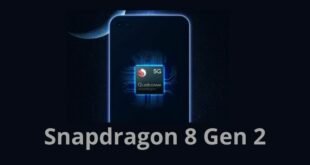Qualcomm has come forward with a new entry-level 200 series Snapdragon processor, the Snapdragon 215, which is a bit of an improvement from the Snapdragon 212. So, how much of an upgrade does the new Qualcomm Snapdragon 215 bring to the table? Well, let’s find out!
Snapdragon 215 vs Snapdragon 212
The major improvement in terms of architecture is that the 215 is built on 64-bit architecture. On top of it, we have a faster GPU and support for a dual-camera setup compared to a single-camera setup support of the Snapdragon 212.
CPU
As we look at the cores, we have four Cortex-A53 cores clocked at 1.3 GHz. ARM says the new A53 cores are 50% faster than the A7 cores found in the Snapdragon 212. On the plus side for Android users, we see a 64-bit in the Snapdragon 215, so future Android updates are now a reality for even cheap devices, unlike the Nokia 2, which cannot go past Oreo now.
Camera
The dual camera on the rear of new devices is now pretty mainstream, and the 212 was somewhat lacking in this spectrum. It could only have a single 8MP sensor whose maximum video recording resolution is 720p. But with the new Snapdragon 215, we can have two 8MP sensors or a more capable 13MP single sensor. Of course, with a single sensor, you lose out on the upside of having an extra telephoto lens or an extra depth-sensing lens, but there is an upside of getting more clarity into the pictures with that single 13MP lens. So, it all depends on what the smartphone manufacturer has in the vision for a new low-priced device. Again, with the Snapdragon 215, you can record videos at 1080p resolution, which is a great plus in terms of camera.
Display
Regarding resolution on the display, though, we are still stuck at 720p, which is expected as Qualcomm had to cut some corners. What Qualcomm did not cut any corners, though, is in the improvements of connectivity. We see the much-needed Wi-Fi 5 (802.11ac) addition, along with support for Bluetooth 4.2. Payment through mobile devices is getting more and more dominant through these times, and NFC plays a huge part in it. Qualcomm has realized it, and we see an upgraded NFC with support for Android Pay. But that’s not all, as we also see dual VoLTE and EVS support for the first time in a 200-series Snapdragon processor.
GPU
Again, in terms of power in the GPU, we see a 28% power boost as compared to the Snapdragon 212 with the Adreno 308, which is the same we see on the Snapdragon 425.
Similarities Between The Two
Now, as we move on to the similarities, we see the same memory support, LPDDR3 RAM, eMMC 4.5 built-in storage, and the same UHS-I microSD type support for expansion. As for the modem, it packs in the same X5 LTE modem found on the 212. Following on as a 200 series processor, the Snapdragon 215 maintains its 28nm node size.
Specifications That Matter
Here are the differences between Snapdragon 215 and Snapdragon 212.
| SoC | Snapdragon 215 | Snapdragon 212 |
| CPU | 4x Cortex-A53 (64-bit, 50% faster) | 4x Cortex-A7 (32-bit) |
| GPU | Adreno 308 (28% faster) | Adreno 304 |
| Process | 28nm | 28nm |
| Memory | LPDDR3 Single-channel 672 MHz 3 GB | LPDDR2/3 Single-channel 533 MHz |
| Display | 1560x720px | 1280x720px |
| Camera | 13MP or dual 8MP, 1080p video | 8MP, 720p video |
| Modem | X5 LTE | X5 LTE |
| Connectivity | Wi-Fi a/b/g/n/ac, Bluetooth 4.2, NFC | Wi-Fi a/b/g/n, Bluetooth 4.1 |
| Charging | Quick Charge 1 | Quick Charge 2 |
Verdict
Qualcomm tested this processor on a 3,000 mAh battery device and got 10+ hours of video playback, 20+ hours of voice calls, and days of music playback. So overall, the Snapdragon 215 feels like a processor just below the Snapdragon 425, which is excellent for customers looking for cheap phones as their daily drivers for basic use.



